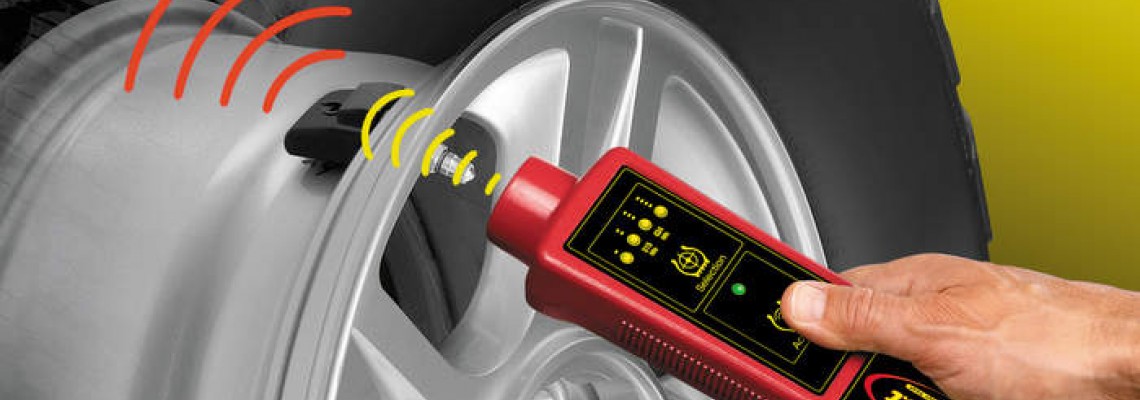
The advancement of automotive technology has significantly increased driving safety. One of the key developments in this field is the Tire Pressure Monitoring System (TPMS). However, what is TPMS, how does the Tire Pressure Sensor work, in which vehicles is it used, and how can possible malfunctions be resolved? We will delve into these topics in detail.
What is TPMS - Tire Pressure Monitoring System?
The TPMS (Tire Pressure Monitoring System) is an automotive safety feature. It is generally installed within the tire or operates in conjunction with the ABS system, which detects the rotational speed of the wheel. This sensor constantly monitors the air pressure in the tires and provides instant alerts to the driver if the pressure goes below or above the predefined minimum or maximum values. The TPMS not only enhances driving safety but also optimizes fuel efficiency.
Which Vehicles Use TPMS?
The TPMS is now a standard or optional feature in various types of vehicles. It has been mandatory for vehicles in compliance with European standards, especially those manufactured from the year 2015 and onward.
Passenger Cars: TPMS is almost standard in new model passenger cars.
Trucks and Vans: Tire pressure is critical for these vehicles, making TPMS generally standard.
Motorcycles: High-performance motorcycles produced in recent years also incorporate TPMS.
Special Vehicles: TPMS systems are commonly found in special categories such as RVs, caravans, and luxury cars.
TPMS Malfunctions
Like other mechanical and electronic systems, TPMS can experience malfunctions. For instance, a simple example is that if you switch the front right tire with another tire, the malfunction indicator might light up. This is due to the fact that the control unit of the vehicle contains the ID of each tire sensor. Therefore, if communication is received incorrectly, the TPMS malfunction indicator will illuminate. In such cases, recalibration and reintroduction to the vehicle system are necessary.
Some common malfunctions include:
Sensor Battery Depletion: Depletion of TPMS sensor batteries can lead to malfunctions. To resolve this, you may need to replace the sensor's battery according to the manufacturer's recommendations.
Sensor Calibration: Occasionally, sensor readings can be misleading due to improper calibration. You can recalibrate the sensors using the vehicle's integrated system or follow the manufacturer's instructions for calibration.
Sensor Damage: Physical damage can cause sensors to malfunction. In such cases, replacing the damaged sensor with a new one may be required.
Electronic Interference: Interference from other electronic devices can affect sensor performance. Ensure that there are no strong electromagnetic sources near the sensors.
Incorrect Readings: If TPMS provides incorrect pressure readings, it could be due to a faulty sensor or interference. Checking and replacing sensors, if necessary, is important.
System Reset: If you continue to receive incorrect alerts or if the TPMS light continues to flash even after resolving the issue, you might need to reset the TPMS system according to the vehicle's manual.
Resolving Malfunctions
Battery Replacement: When the TPMS sensor's battery is depleted, usually the entire sensor needs to be replaced.
Calibration: In case of false alarms, recalibrating the TPMS sensor can resolve the issue.
Software Update: Connection issues are often resolved by updating the vehicle's software.
Physical Inspection and Replacement: A damaged TPMS sensor is typically replaced with a new one.
TPMS has become an essential part of the modern automotive world. While enhancing driving safety and fuel efficiency, this system can also bring potential malfunctions and problems. However, these malfunctions are generally easily resolved. Regular maintenance and monitoring of TPMS will protect you from potential accidents and additional expenses.
This content aims to provide comprehensive information about TPMS. We hope this information is useful for vehicle owners. If your vehicle is equipped with TPMS, regular maintenance and checks of the system are crucial.
You can purchase tire pressure sensors through our Otoideal website and perform programming procedures at our installation points.


-75x75w.jpg)


-75x75w.jpg)










-75x75.jpg)





-75x75w.png)


Leave a Comment